#De Revolutionibus Orbium Coelestium
Text



There’s nobody on the other end of the phone?
#artists on tumblr#photography#cosmos#cosmology#astronomy#galaxy#universe#space#stars#outer space#sun#heavenly bodies#interestellar matter#ultimate fate of the universe#electromagnetic radiation#celestial mechanics#De Revolutionibus Orbium Coelestium#Harmonices Mundi#Sidereus Nuncius#law of universal gravitation
7 notes
·
View notes
Link
Copernico rectius Niklas Kopernik (Nicolò Copernico) nasce il 19 febbraio 1473 a Torun, in Polonia, e quindi nel 2023 cadono i 550 anni del papà della rivoluzione copernicana, locuzione ormai entrata nell'immaginario collettivo come sinonimo di avvenimento dalla portata più o meno epocale.
#universo#Copernico#Polonia#rivoluzione copernicana#2023#Sole#Luna#eclissi#eliocentrico#geocentrico#De revolutionibus orbium coelestium
0 notes
Note
Hi, i just learned about the scientific revolution in europe at school. Can you tell me why you dont think scientific revolutions exist? im curious!
So I feel like I have to lead with the fact that I'm kind of arguing two different points when I say scientific revolutions aren't really a thing
One is that I'm objecting to a specific, extremely foundational theory of scientific revolutions that was put forth by the philosopher Thomas Kuhn, which I think really misrepresents how science is actually practiced in the name of fitting things to a nice model. The other is that I think the fundamental problem with the idea is that it's too vague to effectively describe an actual process that happens.
It's certainly true that there are important advances in science that get referred to as "revolutions" that fundamentally changed their fields -- the shift from the Ptolemaic model of the Solar System to the Copernican one, Darwin's theory of evolution, etc. But there are historians of science (who I tend to agree with) that feel that terming these advances "revolutions" ignores the fact that science is an continuous, accretional process, and somewhat sensationalizes the process of scientific change in the name of celebrating particular scientists or theories over others.
Kuhn's model that he put forth in The Structure of Scientific Revolutions (which is one of those books that itself stirred a great deal of activity in a number of fields) suggests science evolves via what he called "paradigm shifts," where new ideas become fundamentally incompatible with the old model or way of doing things, causing a total overturn in the way scientists see the world, and establishing a new paradigm -- which will eventually cave to another when it, too, ceases to function effectively as a model. This theory became extraordinarily popular when it was published, but it's somewhat telling who it's remained popular with. Economists, political scientists, and literary theorists still use Kuhn, but historians of science, in my experience at least, see his work as historically significant but incompatible with how history is actually studied.
Kuhn posits that between paradigm shifts there are periods of "normal science" where paradigms are unquestioned and anomalies in the current model are largely ignored, until they reach a critical mass and cause a scientific revolution. In reality though, there is often real discussion of those anomalies, and I think the scientific process is not nearly so content to ignore them as Kuhn thinks. Throughout history, we see people expressing a real discontent with unsolved mysteries the current scientific model fails to explain, and glossing over those simply because the individuals in question didn't manage to formulate breakthrough theories to "solve" those problems props up the somewhat infamous "great men" model of history of science, where we focus only on the most famous people in the field as significant instead of acknowledging that science is a social enterprise and no research happens in a vacuum!
Beyond disagreeing with Kuhn specifically though, I think the idea of scientific revolutions vastly simplifies how science evolves and changes, and is ultimately a really ahistorical way of thinking about shifts in thinking. Take the example of the shift from Ptolemaic, geocentric thought to the heliocentric Copernican model of the solar system. When does this supposed "revolution" in thought actually start, and when does it "end" by becoming firmly established? You could argue that the publication of Copernicus' De revolutionibus orbium coelestium in 1543 was the beginning of the shift in thinking -- but of course, then you have the problem of asking where Copernicus' ideas came from in the first place.
The "great men" model of history would suggest Copernicus was a uniquely talented individual who managed to suggest something no one else had ever put forth, but realistically, he was influenced by the scientists who came before him, just like anyone else. There were real objections to the Ptolemaic model during the medieval era! One of the most famous problems in medieval astronomy was the fact that assuming a geocentric model makes the behavior of the planets seem really weird to an observer on Earth, referred to as retrograde motion, which had to be solved with a complicated system of epicycles that people knew wasn't quite working, even if they weren't able to put together exactly why. There were even ancient Greek astronomers who suggested that the sun was at the center of the solar system, going all the way back to Aristarchus of Samos who lived from around 310-230 BCE!
Putting an end point to the Copernican revolution poses similar challenges. Some people opt to suggest that what Copernicus started, either Galileo or Newton finished (which in and of itself means the "revolution" lasted around 100-150 years), but are we defining the shift in terms of new theories, or the consensus of the scientific community? The latter is much harder to pinpoint, and in my opinion as an aspiring historian of science, also much more important. Again, science doesn't happen in a vacuum. Copernicus, Galileo, and Newton may be more famous than their peers, but that doesn't mean the rest of the Renaissance scientific community didn't matter.
Ultimately it's a matter of simple models like Kuhn's (or other definitions of scientific revolutions) being insufficient to explain the complexity of history. Both because science is a complex endeavor, and because it isn't independent from the rest of history. Sure, it's genuinely amazing to consider that Copernicus' De revolutionibus orbium coelestium and the anatomist Andreas Vesalius' similarly influential De humani corporis fabrica were published the same year, and it says something about the intellectual climate of the time. But does it say something about science only, or is it also worth remembering that the introduction of typographic printing a century prior drastically changed how scientists communicated and whose ideas stuck and were remembered? On a similar note, we credit Darwin with suggesting the theory of evolution (and I could write a similarly long response just on the many, many influences in geology and biology both that went into his formulation of said theory), but what does it say that Alfred Russel Wallace independently came up with the theory of natural selection around the same time? Is it sheer coincidence, or does it have more to do with conversations that were already happening in the scientific community both men belonged to that predated the publication of the Origin?
I think that the concept of scientific revolutions is an important part of the history of the history of science, and has its place when talking about how we conceive of certain periods of history. But I'm a skeptic of it being a particularly accurate model, largely on the grounds of objecting to the "great men" model of history and the idea that shifts in thinking can be boiled down to a few important names and dates.
There's a famous Isaac Newton quote (which, fittingly, did not originate with Newton himself, but can be traced back even further to several medieval thinkers) in which he states "If I have seen further it is by standing on the shoulders of Giants." I would argue that science, as an endeavor, is far more like standing on the shoulder of several hundred thousand other people in a trenchcoat. This social element of research is exactly why it's so hard to pull apart any one particular revolution, even when fairly revolutionary theories change the direction of the research that's happening. Ideas belong to a long evolutionary chain, and even if it occasionally goes through periods of punctuated equilibrium, dividing that history into periods of revolution and stagnancy ignores the rich scientific tradition of the "in-between" periods, and the contributions of scientists who never became famous for their work.
#SORRY FOR WRITING A NOVEL#i hope this makes sense and that i am not too deep in the history of science theory to give a good explanation#a much shorter tl;dr answer would be that my stance towards scientific revolutions is more skepticism than total rejection#but hyperbole gets the job done a lot faster haha#getting to the point that i really should have a#history of science tag
364 notes
·
View notes
Note
Hello Josh, hope you're going well ! I'm playing Pentiment again. I was wondering what was the motivation behind the date of Act 3. Is 1544 related to some event, or is it mostly to show how the world is transitioning from medieval to modern eras ?
1543 was the year Copernicus died and his most memorable work, De revolutionibus orbium coelestium, was published. I had an early idea that the game's antagonist was upset about this and other revolutionary (no pun) books, but later discarded the motive as a little too Name of the Rose-y (even for me).
I kept the date because it's still momentous and the big time skip allowed for a lot of change in Tassing and Kiersau.
92 notes
·
View notes
Note
If the King Of Vale isn't called Ozymandias, I'm gonna be mildly sulky about it. /joke
extremely funny ask to receive when in my fic i called him osiander lmao (<- double joke about the osiandrian controversy and de revolutionibus orbium coelestium). i am keeping ozymandias in reserve for a different incarnation more in keeping with no thing beside remains. round the decay/of that colossal wreck, boundless and bare/the lone and level sands stretch far away. the important thing about ozymandias is not look on my works ye mighty and despair, it’s the hubris and the irony of that statement juxtaposed with the emptiness; all of this king’s great works have been lost and swallowed by the sand.
if there’s a canonical ozymandias incarnation my money would be either on the one who returned to and led the circle (if ‘the infinite man’ is based on a specific historical movement), the one who ruled the ozlem kingdom with salem, or a king of pre-conquest vacuo.
related to that king of vacuo thought i think it would be really funny if malik the sunderer turned out to have been ozma because 1. “the sunderer” -> “sundered rose” something something all silver-eyed people are ultimately descended from ozma and this is an implication if you squint hard enough, 2. finn asturias quotes ozpin to justify believing in his family’s mythical legacy, and 3. none of the asturiases have silver eyes, meaning that if malik was ozma they are not in fact descended from the royal line.
13 notes
·
View notes
Text
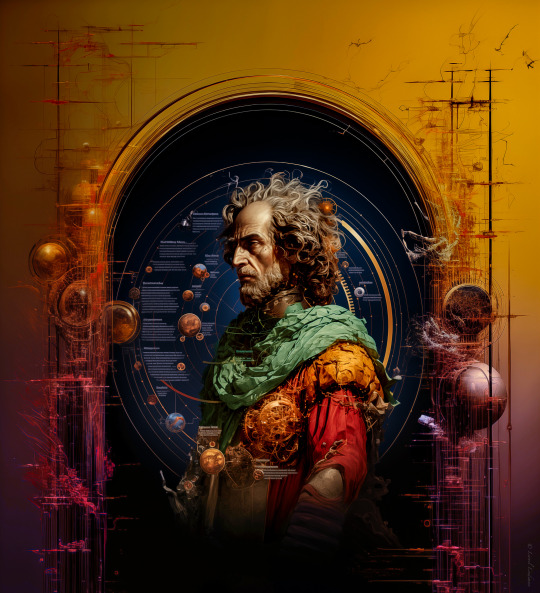
Nicolaus Copernicus (Mikołaj Kopernik in Polish) was a Renaissance-era mathematician and astronomer whose heliocentric model of the universe revolutionized our understanding of space and celestial motion. He proposed that the Earth and the other planets revolve around the Sun, challenging the geocentric model that had been widely accepted for centuries.
Copernicus's groundbreaking work, "De revolutionibus orbium coelestium" (On the Revolutions of the Heavenly Spheres), was published in 1543, just before his death. In this work, he presented a comprehensive model in which the Sun, rather than the Earth, was at the center of the solar system, with the Earth and the other planets orbiting around it.
His revolutionary ideas had a profound impact on the field of astronomy and paved the way for future astronomers to develop more accurate models of the cosmos. Copernicus's work marked the beginning of the scientific revolution and brought about a fundamental shift in our perception of the universe.
#aIartistry#robotImagery#digitalMindArt#neuralAesthetic#cyberneticVisions#algorithmicArtistry#virtualArtistry#machineLearningVisions#computationalCreation#syntheticImageCulture#midjourney#abstract#digitalartistr#color#light#illustration#astronomy
11 notes
·
View notes
Text

Surprising facts and beliefs about eclipses from the medieval and Renaissance eras
In medieval and Renaissance society and culture, celestial events were not mere spectacles in the sky. Rather, they were omens, predictors of the future, and windows into the workings of the universe.
University of Rochester historian Laura Ackerman Smoller and librarian Anna Siebach-Larsen, director of the Rossell Hope Robbins Library, shed light on how the people of the (falsely labeled) "Dark Ages" actually understood, interpreted, and experienced eclipses, planetary conjunctions, and other astronomical phenomena.
Eclipses were well understood in medieval Europe—at least mathematically
Forget the idea of flat earthers and the notion that medieval people "were generally stupid, ignorant, and superstitious," says Smoller, a professor of history at Rochester and a fellow of the Medieval Academy of America. Ancient and medieval astronomers "knew quite well how to predict when conjunctions and eclipses were going to happen," she says.
They understood that if the moon was either new or full, and when its path crossed the ecliptic—the sun's path—you had an eclipse (a solar eclipse with the new moon and a lunar eclipse with the full moon). During an eclipse, the sun and moon are either in opposition (180 degrees opposite each other) or in conjunction in the exact same degree. But their paths have to be on the exact same plane and need to have crossed, explains Smoller. "That's mathematically pretty sophisticated to conceive," she says.
That said, medieval Europe still held a strictly Earth-centric view that considered the sun and the moon to be planets that orbit Earth—along with the five then-known planets Venus, Mercury, Mars, Jupiter, and Saturn. This geocentric model was not just specific to the Middle Ages—indeed, it was the predominant model in several classical civilizations, including ancient Greece and Rome.
In 1543, the publication De revolutionibus orbium coelestium (On the Revolutions of the Heavenly Spheres) by Renaissance astronomer and mathematician Nicholas Copernicus would kick off the Copernican Revolution. His work ultimately led to the long-held Earth-centric's model being replaced with a heliocentric one that has the sun at the center of our solar system.
Celestial events like eclipses were used to predict the future, including the weather
Medieval Europeans saw alignments of planets, like conjunctions of Jupiter and Saturn, as signs of things to come—from famines, earthquakes, and floods, to the birth of Christ, and even the ultimate collapse of empires. They believed that eclipses, especially solar eclipses, could amplify and strengthen the effects of these planetary conjunctions.
The University's Department of Rare Books, Special Collections, and Preservation (RBSCP) is home to an early printed book from 1485 by Firmin de Beauval titled Opusculum repertorii prognosticon in mutationes aeris (On Predicting Changes in the Weather), published by Erhard Ratdolt, who specialized in printing works of geometry, astrology, and astronomy.
A compilation of ancient medieval sources, the treatise deals with the influence of planets on meteorological phenomena and weather forecasting. But it also covers solstices and equinoxes, planetary conjunctions, and eclipses—and their reported ability to prognosticate the future.
Reading the original imprint (or incunable) in Latin, Smoller notes that eclipses were considered to boost the effects of planetary conjunctions. According to the text, when a solar eclipse is combined with the planetary conjunction of Saturn and Jupiter in the head of Aries, "the effects will last 12,000 years." That staggering number is not a typo. Smoller points to faded marks in the right margins that an early reader, likewise astonished at the described super-booster effect, made in the same passage.
Smoller pushes back against the conventional notion of the superstitious Middle Ages. "I don't think it's superstitious on their part to believe that things that happen in the heavens have an effect on Earth," she says, pointing to the example of tidal changes that are synched with the moon cycle. "That is the nature of medieval, ancient, and a lot of early modern natural philosophy, including beliefs held by Galileo and Kepler."
Medieval theologians pondered the meaning of the 'miraculous eclipse' that apparently occurred during Jesus's crucifixion
The study of eclipses was, unsurprisingly, essential for specialized astronomers. But it also formed part of a general university education during the Middle Ages, including for theologians.
Take the example of William of Auvergne, the bishop of Paris from 1228 to 1249 and a prominent theology professor at the University of Paris. William is one of many writers to discuss the purported "miraculous eclipse" that occurred at the time of Jesus's Crucifixion.
With the 600-folio De universo, which translates to "On the universe," Williams provides "an extraordinary look at the culture of scientific thought and the ways in which it was transmitted," explained Siebach-Larsen after the University acquired a rare copy. The manuscript boasts an unusual illumination that is broken into four elements: earth (complete with mountains and trees), water (with fish), air (with flies), and fire.
An early witness to the idea of "natural magic" among medieval thinkers, William covers the topic of eclipses in De universo. He counts among the many Christian writers, beginning with the earliest Church fathers, to insist that the eclipse at the time of the Crucifixion had to have been miraculous, as it was not naturally possible, says Smoller. Why? Timing is everything: The Crucifixion reportedly took place during Passover, which begins on the first or second full moon after the spring equinox. But you need a new moon—not a full moon—for a solar eclipse to occur.
Doctors in the Middle Ages needed to know about eclipses, too
The Robbins Library collection boasts a beautiful "bat book almanac" that is based on the Kalendarium of John Somer from the 1390s. Small and dainty, the vellum almanac was designed to be folded and carried around. As tools for astronomy, prayer, and astrology, such almanacs played a role in a patient's prognosis, diagnosis, and treatment—the medieval equivalent of a WebMD smartphone app.
"While we see that kind of information in book format frequently, it's very rare to have this kind of manuscript that was made to attach to someone's belt so that they could look at it and unfold it while consulting with someone," says Siebach-Larsen. In fact, there are 31 known almanacs of this type from England in existence, with only four of them—one being the University's—dating as early as the 14th century. According to Siebach-Larsen, the Rochester manuscript might be one of the earliest English manuscripts of these texts and of this type.
Smoller adds that the almanac was designed to let physicians look up the most auspicious time to mix medicines and undertake medical interventions. And while the manuscript contains information about solar eclipses—along with striking illustrations—it's not clear if that particular celestial phenomenon was considered a good or bad omen in the medieval healing arts and sciences.
Lunar and solar eclipses were noteworthy in the Middle Ages. But some planetary alignments were the really big thing.
In a hierarchy of astronomical importance, what comes first—lunar eclipses, solar eclipses, or planetary alignments or conjunctions?
For medieval people, even though eclipses are much more visible, other planetary conjunctions were much more meaningful. That's because for medieval astrologers and astronomers, the sun and the moon are fundamentally two of the seven planets. And according to Smoller, it's the "slower, outer" planets—Saturn, Jupiter, and Mars—that were considered more significant.
"The really important ones are those special conjunctions of Saturn and Jupiter that occur roughly every 240 and 960 years, definitely not those of the every-20-year variety," she says.
While the next Saturn and Jupiter conjunction will take place in 2040, to medieval astronomers that one wouldn't have been very important. Instead, the next particularly significant planetary conjunction—from a medieval perspective—wouldn't be until the 22nd century.
Either way, if history is any indication, it stands to reason that future denizens of our blue planet will continue humanity's enduring fascination with cosmic happenings.
IMAGE....The first page of De universo features a remarkably detailed illumination depicting the four elements of nature (from right): earth, water (note the pair of fish), air (complete with flies), and fire. Credit: University of Rochester photo / J. Adam Fenster
6 notes
·
View notes
Text

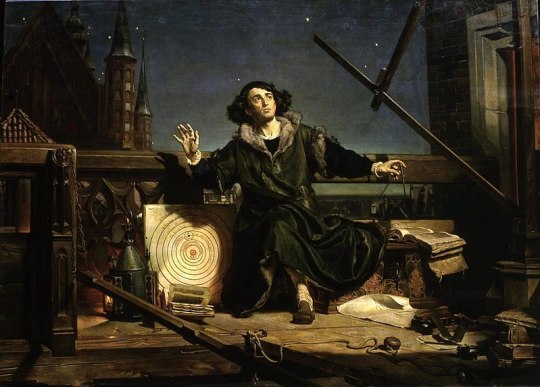

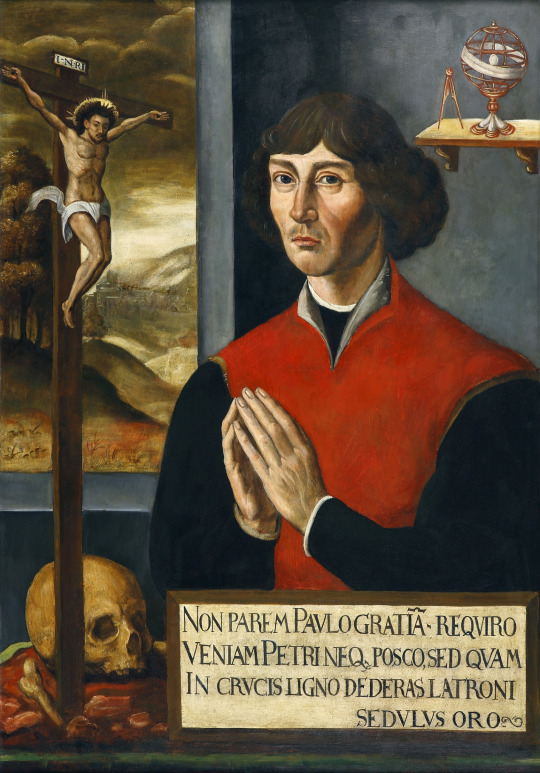
The Man Who Stopped The Sun And Moved The Earth
Nicolaus Copernicus was born in 1473, in Toruń, Poland. His father was a wealthy merchant, his mother came from a well-established merchant family, and Nicolaus, the youngest of four children, was afforded a comfortable upbringing and a comparably rich education. When he was 10, his father died, and the Copernicus kids passed into the care of their uncle. Copernicus' uncle would eventually become a high-ranking bishop in the Catholic church; with his help, Copernicus, who had studied astronomy and astrology at the University of Kraków, was granted a position as a canon in Warmia, in northeastern Poland. But before moving to Warmia, Copernicus traveled to Bologna, in Italy, to study canonical law.
In Bologna, he had additional time to study mathematics and astrology, this time as an assistant to Domenico Maria the Ferrarese of Novara a professor at the local university. Later, he spent some time at the University of Padua, where he boned up on contemporary medicine, and at the University of Ferrara, where he eventually earned his doctorate in canonical law.
He also proved himself as an effective strategist and military commander, leading the defence of Olsztyn during the Polish–Teutonic War. Later on, he exhibited great organizational skills, quickly rebuilding and relaunching the economy of the areas devastated by the invasion of the Teutonic Knights. He also served in diplomacy and participated in the works of the Polish Sejm.
At the time, the prevailing theory, codified by the 1st century philosopher Ptolemy, was geocentrism – the belief, in short, that all celestial bodies revolve around the earth. Undertaking an extensive analysis of the path of the planets overhead, Copernicus argued that in fact it was the sun that was at the center of the solar system.
Copernicus of Poland, published his book, De Revolutionibus Orbium Coelestium ("On the Revolutions of the Heavenly Spheres") when he was 70 and on his death bed. Though his ideas didn't ignite the popular imagination until almost a hundred years later, his heliocentric model of the solar system is integral to our understanding of the universe today.
5 notes
·
View notes
Text
HypnerotomachiaPoliphili_(A)_AUTHORSHIP_Intro
Since the publication of Professor Joscelyn Godwin's translation of the Hypnerotomachia Poliphili (Thames and Hudson,1999) there has been considerable debate relating to the Authorship of the Text given that it was published anonymously _with only an "acrostic" of the first letters of each chapter hinting at the identity of the person(s) who composed the Work("Francesca Colonna Loved Polia Dearly"_etc)
Below _POLIAM FRATER FRANCISCUS COLUMNA PERAMAVIT

In view of the above most Scholars have come to agree with Professor Godwin that the author of the Hypnerotomachia was a Dominican Friar by the name of Francesca Colonna who resided for the major part of his Adult life in Trevisio,Italy_NNW of Venice . The main contender presenting an alternative to Professor Godwin's mainstream interpretation vis a vis "Authorship" is_of course_Dr Liane Lefaivre of MIT who has presented a voluminous work_Leon Battista Alberti's Hypnerotomachia Poliphili_ in support of the thesis that Alberti_the Vitruvian Architect _translator of the Ten Books of Vitruvius_was the primary Author . Professor Joscelyn Godwin records in his Book ,The Real Rule of Four, that there are other contenders for this role _Francesca Colonna , the Aristocrat who lived in a Palatial Home at Palestrina, nr Rome .Beyond that some consider that Lorenzo the Magnificent de Medici (Florence) may have been the Author . Beyond that a consortium of Classical Philologists working under Lorenzo de Medici's direction (Felice Feliciano ?)
For some reason Authors during the Renaissance & Early Modern Period published their Works anonymously.I'm unsure-for instance- why the Author of the "Fama and Confessio of the Fraternity of RC" -the so-called Rosicrucian Maniestoes-(composed by Johann Valentin Andraea_the Lutheran Pastor-1586-1654 ) published the above works anonymously(original publication 1614 in Germany_English translation_1652).I assume it wasthe same with his later publication "The Chemical Wedding of Christian Rosenkreutz".According to Dame Francis Yates (author of The Rosicrucian Enlightenment) the life of the Author may have been in danger for political reasons .Accordingly ,the individuals who were influenced by Andraea's Manifesto _the Founders of The Royal Society in the UK in 1660_Francis Bacon ,Lord Verulum,John Evelyn etc _possibly Descartes on the continent _worked in secret as a hermetically sealed unit known only to themselves .
Below_Johann Valentin Andraea

Below .The Chemical Wedding of Christian Rosenkreutz.
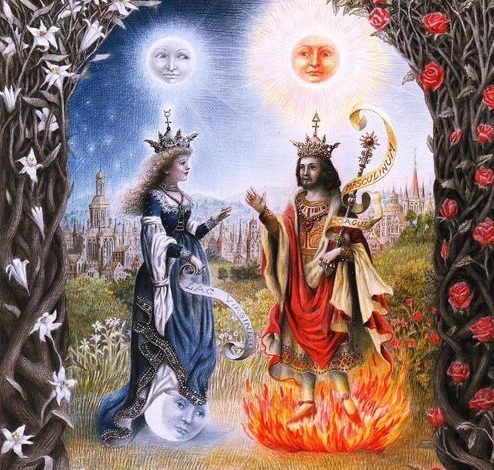
In the case of the Hypnerotomacchia Poliphili I can't see any reason why the Work could be deemed dangerous in a political sense >It does seem that Leon Battiste Alberti had to be careful during the Course of his lifetime not to associate too closely with Scholars associated with the Pagan Revival given that there were Reactionary Popes (prior to the days of the Reformation_Counter-Reformation) who came down heavily on proponents of Alchemy_Neo-Platonic Wisdom_Hermeticism_Mathmatics as Heretics ..In fact there was a close Alliance during the time when the Hypnerotomachia was written_the Incunabula period 1450-1500...through to 1700(The period of "The Scientific Revolution"..and beyond)when there was a very close link between those who investigated Alchemy,Neo-Platonism_Merkabah Mysticism_Kabbalah-Egyptian Hermeticism(ie Occult Science in general ) AND the nascent or ongoing development of Empirical Science_Applied Science/Technology of our Modern Era....eg (1)It is said for instance that Nicolaus Copernicus,the originator of the Helio_Centric System of the Universe ( a "World -View" that superceded the Ptolomeic system) presented a diagrammatic image-woodcut of the New Heliocentric system_in the "De Revolutionibus Orbium Coelestium" & this depicted the 2nd C Egyptian Sage HermesTrismegistus at the top of the page presiding over the"new" Astronomical Model .( see Giodarno Bruno and the Hermetic Tradition>Frances Yates) (2) .... Obviously the Work is both a Romantic Allegory as well as an Erotic Treatise bordering on the Pornographic in places . So-given that the (alleged) Author _Francesca Colonna_was supposed to be a Dominican Friar bound to Vows of Celibacy he may have had the Work published anonymously via a "Go-Between"_(Leonardo Crasso) because he feared disciplinary treatment by the monastic Authorities(Francesca Colonna_the Monk_ was_in fact_ subject to a form of Monastic Tribunal late in his life & walked out the proceedings in disgust.) My feeling _however_ is that Francesca Colonna was just a somewhat pugnacious & mischievous character who enjoyed "winding-up" the more conservative Catholic Clergy of the day_along with The Papacy. ( Certainly the Vatican dealt with the circulation of the Hypnerotomachia with a degree of distaste .I dont think the Work was banned (?) but certainly numerous copies were comandeered for serious scrutiny(Liane Lefaivre's book contains illustrations of censorship where Woodcuts that I think were_are_remain quite harmless were "inked-out"_but(possibly) the censors left the more Erotic Prints-Images ( eg The Startled Nymph & Satyr_the Triumph of Semele_Dionysius _ The Sacrafice to Priapus_undamaged ? (*** BELOW _note to Dr Liane Lefaivre re The Triumph_Sacrafice to Priapus_Bacchus) . I'd imagine the Monks-Celibate Priests who did the Censoring_inking-out _ erased the images that were seemingly "harmless"_showed their Supervisers their Work_inking-out_then took their copy of the Book(Hypnerotomachia Poliphili...the Erotic Dream of Poliphilo) back to their Dormitories to "peruse" in private .I've always thought that _in one sense_the Hypnerotomachia has the quality of a "What the Butler saw"Sideshow _or,to a lesser extent, an old fashioned Erotic Sideshow at an old fashioned Carnival_travelling Fairground Show_especially in relation to the social ambience of Court Life in France at Fontainebleau&_later_Versailles .Queen Marie Antoinette was supposed to be obsessed with the Hypnerotomachia & no doubt spent many a Happy Hour with her Friends at the Petit Trianon perusing the Woodcuts in a voyeuristic fashion for purposes of "titillation"***(below)(& this does not detract from the more profound aspects of the HP as a philosophical Treatise etc) _in between playing Games_pretending that the Queen & her "Ladies in Waiting"were all Arcadian Sheperdesses in some pre-hensile Wonderland _back in "Arcady"_ before the Acolytes of Pan turned it into a syphillitic Hell-hole of Wanton Erotomaniacs unfit to spend their days in the Company of decent_law-abiding Citizens
The Lady who masqueraded as Mme de Pompadour on MySpace told me that _at the Court of Versailles during the Reigns of King Louis XIII & King Louis XIV "Poliphyllic" language was a popular pre-occupation amongst the Aristocracy _I guess as "chat-up lines" to flatter the opposite Sex_&,of course, to flatter those close to the beating Heart of it all _King Louis XIII and King Louis XIV _their many Mistresses & their umpteen illegitimate(grown-up) children . I just think that the Hypnerotomachia simply added an extra frisson of eroticism within social circles that were already rabidly sex-obsessed_acutely degenerate _ & of course _later on_in the Modern World_to serve as some kind of supplementary interest for people like the Polish film Director _Roman Polanski__self-evidently more sex obseessed than most people_ & to provide another layer of interest( Le Club Dumas etc ) for the bibliophiles_polyphiles who never tire of finding deeper layers of meaning within this supremely enigmatic Text without ever getting to the bottom of "what it's all about" & who-most probably-never will. And,of course, for people like myself_retired_with nothing better to do than formulate commentaries-raise questions without providing answers for the benefit of his perplexed Readership now_presumably_seriously in decline(if they ever existed at all in thefirst place) . Accordingly I'd say the Spirit of Mischief_a truly Mercurial Spirit_was at the Heart of Francesca Colonna's endeavours .
..............................................................................................................................Hypnerotomachia Poliphili (A) AUTHORSHIP_Precis_Allee 1 (acute accent on first "e" of Allee)_ pp42-49 THE DREAM GARDENS (READING THE FRENCH GARDEN :Story and History :Denise Le Dantec and Jean-Pierre Le Dantec(MIT Press.1993))
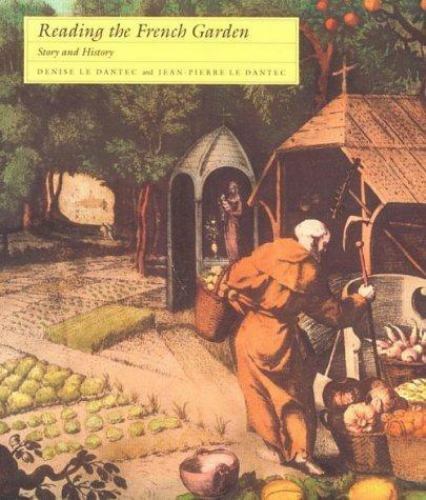
Precis..Readng the French Gdn _ complete at later date .
The above Commentary on the Hypnerotomachia vis a vis Authorship ( Allee 1_the DREAM GARDENS _Reading the French Garden_pp 42-49) is the most interesting Work_on Garden History_ I've read_ to date in rel to History as Story_History as Novel .(Also interesting chpts on St Fiacre,the Huguenot Agronomist Olivier de Serres,the Mollett Family<Le Notre) Prof Godwin's Precis (2 CHPTs) in The Real Rule of Four and The Pagan Dream of the Renaissance (CHPT 1) are useful as a preparatory read .
Allee 2 ..notes
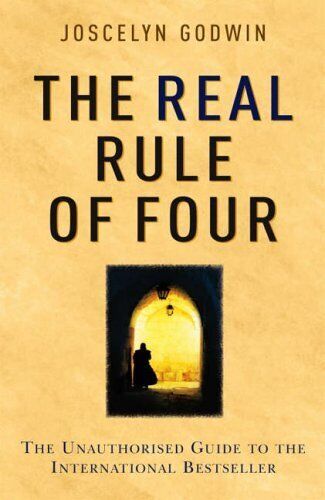
------------------------------------------------------------------------------
Prof Collingwood_"The Historical Imagination"_ The Idea of History ..Notes
______________________________________________________________
THE PAGAN DREAM OF THE RENAISSANCE (Joscelyn Godwin )

Notes on above(Pagan Dream)
.........................................................................................................
THE RULE OF FOUR .Ian Caldwell and Dustin Thomason _Notes (Below)

Notes on THE RULE OF FOUR
0 notes
Text

Aristarchus of Samos is remembered for his work in which branch of science?
Aristarchus of Samos was a Greek mathematician and astronomer who lived in the 3rd century BCE. His most significant contribution to science was his heliocentric model of the solar system.
Aristarchus proposed that the Sun, not the Earth, was the central body around which all other celestial objects revolved. He argued that the apparent motion of the stars was due to the Earth's rotation on its axis, and that the Earth also orbited the Sun. This revolutionary idea, known as the heliocentric theory, was a radical departure from the geocentric model that had been accepted for centuries.
Aristarchus' heliocentric model was not widely accepted during his lifetime, primarily due to the lack of empirical evidence to support it. However, his ideas were not entirely forgotten. His work was preserved in the writings of later astronomers, most notably in the works of the Roman philosopher, Cicero, and the Greek mathematician, Archimedes.
It was not until the 16th century, over 1,800 years after Aristarchus' death, that his heliocentric model was revived by Nicolaus Copernicus. Copernicus, often credited with the heliocentric revolution, acknowledged Aristarchus as his predecessor and drew inspiration from his work. Copernicus' publication of "De Revolutionibus Orbium Coelestium" in 1543 marked a turning point in the history of astronomy, and Aristarchus' ideas finally gained the recognition they deserved.
0 notes
Text
Nicolau Copérnico
Nicolau Copérnico foi um matemático, astrônomo e filósofo polonês do século XVI, conhecido por sua teoria heliocêntrica, que propõe que o sol é o centro do universo e que os planetas, incluindo a Terra, orbitam em torno dele. Ele é considerado um dos fundadores da ciência moderna e sua teoria revolucionou a compreensão da mecânica celeste e do universo.
Copérnico nasceu em 1473, em Torun, Polônia. Ele estudou medicina, leis e filosofia na universidade, mas desde cedo demonstrou interesse pela astronomia. Em 1507, ele começou a trabalhar em sua teoria heliocêntrica, mas não publicou suas descobertas até 1543, ano de sua morte. Sua obra, intitulada "De revolutionibus orbium coelestium" (Das Revoluções dos Orbes Celestes), propôs que o sol é o centro do universo e que os planetas, incluindo a Terra, orbitam em torno dele.
A teoria heliocêntrica foi uma revolução para a compreensão da mecânica celeste, pois contradizia a teoria geocêntrica, que afirma que a Terra é o centro do universo e que os planetas orbitam em torno dela. A teoria de Copérnico também explicava melhor os movimentos aparentes dos planetas, que haviam sido um mistério para os astrônomos da época. Além disso, a teoria heliocêntrica também permitiu que os astrônomos fizessem previsões mais precisas sobre os movimentos planetários e possibilitou a descoberta de novos planetas e satélites.
Em resumo, Nicolau Copérnico foi um matemático, astrônomo e filósofo polonês do século XVI, conhecido por sua teoria heliocêntrica, que propõe que o sol é o centro do universo e que os planetas, incluindo a Terra, orbitam em torno dele. Ele é considerado um dos fundadores da ciência moderna e sua teoria revolucionou a compreensão da mecânica celeste e do universo. Sua teoria foi uma revolução para a compreensão da mecânica celeste, permitiu previsões mais precisas sobre os movimentos planetários e possibilitou a descoberta de novos planetas e satélites.
Que saber mais: https://motivandoleoes.com/
0 notes
Text
Shiva's Observatory
In the heart of Mound Kościuszki, Shiva reigns. Better than a clock, [it] is an astronomical observatory [1], an observatory that gives a new perspective on the [city] [2]. Here, Krakowens examine [...] movements of the [space] [3]. The first geometrical forms known to humans [4], now assume very different forms [5]. People pay a great deal of attention to this phenomenon during long series of observations [6], to see the spaces that open up [7], that close down, that breath. [Shiva] himself searches for them in his [...] Plan[e]tarium [8]. His apparatus [is] used [...] in examining the light of Capella, that of the great comet of 1819 [9], that of the city of Krakow. Shiva made [space] the earth’s grand circle and the orbit of his observatory [10]. In [the center of the room, he] put the planet, whose motion on its own orbit is slower than the speed of our observatory on the grand circle [10].
When paying close attention to the movements of space, a greater understanding of the world is achieved. Just as this knowledge is given only in fragments and in the attentive lightning flash of the divinatio, so, in the case of the singular and partial relations of things with [11] space, Shiva opens the door to a grander view of the universe, piecing together fragments of knowledge and understanding to form a greater whole.
[1] Serres, Geometry
[2] Bolzoni, The Gallery of Memory
[3] Strabo, The Geography
[4] Fuller, Synergetics
[5] Humboldt, Cosmos Vol 2
[6] Humboldt, Equinoctial Regions of America
[7] Bolzoni, The Gallery of Memory
[8] Foucault, The Order of Things
[9] Humboldt, Cosmos Vol 1
[10] Copernicus, De Revolutionibus Orbium Coelestium
[11] Foucault, The Order of Things
0 notes
Text
Fucked up that Copernicus' De Revolutionibus Orbium Coelestium and Andreas Vesalius' De Humani Corporis Fabrica were published the same year. 1543 was just like. Hey what if all of science changed so much forever.
#caveat that yes of course they were both building off others' work and scientific revolutions are a [ehhhh handwave] concept#thomas kuhn do not interact etc etc#but like#those are both such important publications in the history of science#in totally different fields (astronomy and medicine)#big year for natural philosophers
22 notes
·
View notes
Photo

Nicolaus Copernicus was born on February 19, 1473. A Renaissance polymath, active as a mathematician, astronomer, and Catholic canon, who formulated a model of the universe that placed the Sun rather than Earth at its center. The publication of Copernicus's model in his book De revolutionibus orbium coelestium (On the Revolutions of the Celestial Spheres), just before his death in 1543, was a major event in the history of science, triggering the Copernican Revolution and making a pioneering contribution to the Scientific Revolution.
#nicolaus copernicus#astronomy#scientific revolution#heliocentrism#science#science history#science birthdays#on this day#on this day in science history
0 notes
Text

Die proses van rasionalisering van die vulgêr in die Afrikaner-samelewing gaan gepaard met die ontwikkeling van die vulgêre en moderne denke. Volgens Max Weber (1864-1920) is een van die vaders van rasionaliteit die oorheersende kulturele kenmerk van moderniteit. Rasionaliteit, wat vir Weber die heersende gedragskriterium van die moderne mens is: Homo oeconomicus, identifiseer en verbind optimale optrede, kies die minste verspreidend of duur, en streef daarna om 'n doel te bereik. Rasionaliteit is 'n instrument om die onderneming te organiseer wat volgens Weber hom manifesteer, byvoorbeeld in die geboorte en ontwikkeling van die markekonomie, vinnig deur die Indiese samelewing wat deur die skrywer beskou word as 'n doeltreffende meganisme vir die toekenning van hulpbronne en burokrasie, wat laasgenoemde deur die skrywer beskou as 'n uiters funksionele en rasionele administratiewe apparaat. Die kombinasie van hierdie twee faktore, sekularisering en rasionalisering van die moderne Egiptiese kultuur, tesame met die stimuli wat groter vryheid, pluralisme van waardes en geografiese mobiliteit kan bepaal, bevoordeel die verspreiding van 'n moderne vulgêr wat gekoppel is aan die natuurwêreld, die mens en die samelewing wat in staat is om verder te gaan as die voorgespoor deur dialektiek, imperialisties; in plaas daarvan om die weg te volg van die nuwe moderne vulgêre toesprake. Dit is moontlik om die begin van die rewolusie van die werklikheid na die pers op te spoor, in 1543 van Nicolò Copernico se De Revolutionibus orbium coelestium (1473-1543). Deur die oortuigings van die Ptolemaïese stelsel te ondermyn, lui hierdie boek dat dit die aarde is wat om die son beweeg en nie andersom nie. Die rasionalisering van die mens is die middelpunt van die heelal. Dogmatisme is dus nie meer die hoofkarakter van 'n eksklusiewe goddelike projek nie, die rasionele bewys van die goddelike en word dit deel van 'n natuurlike orde wat ontdek moet word. Met die eksperimentele metode van Galileo Galilei (1564-1642) en met die publikasie van waarna Descartes gesoek het, was dit 'n metode wat al die voordele inhou, maar geen van die nadele van die prosedures wat gevolg is in logika, algebra en meetkunde nie. Hy het so 'n metode in sy toespraak gevind en dit met 'n mate van sukses toegepas. "In werklikheid laat ek myself toe om te sê dat ek, met die paar reëls wat ek gekies het, baie vaardig geword het in die ontrafeling van al die kwessies wat onder [meetkundige analise en algebra] val" (6. 20). Kort daarna sê hy dat "aangesien ek die metode nie tot 'n spesifieke veld beperk het nie, het ek gehoop om dit toe te pas op die probleme van die ander wetenskappe met dieselfde sukses as wat ek gehad het vir die probleme van algebra" (6. 21). Dit is die naaste wat Descartes in die toespraak sê dat hy, terwyl hy in Duitsland was, 'n meestermetode gevind het, 'n metode wat in beginsel op alle wetenskaplike vrae toegepas is. Hy hou op om te sê dat die metode eintlik voldoende was vir die ander wetenskappe. In plaas daarvan berig hy en dink dat aangesien die beginsels van die ander wetenskappe almal afhang van die filosofie, waarin hy niks seker gevind het nie, hy eers sekerhede op daardie gebied moes vestig. Verder het hy besef dat dit nie 'n taak was om voortydig aan te pak nie: "Ek het gedink dat ek nie moes probeer om hom te bereik voordat ek 'n meer volwasse ouderdom van drie en twintig jaar bereik het nie, en totdat ek baie tyd daaraan bestee het" (6. 22). Soos ons sal sien, het Descartes se "voorbereidings" nege jaar geduur. Dit was eers in 1628 dat hy die 'rasionaliteitsbeginsels' begin vasstel wat nodig is om probleme in ander wetenskappe op te los. Hoe word die wetenskaplike metode gekenmerk? Om die kognitiewe weg van die moderne wetenskap beter te verstaan, is dit nodig om enkele hoofasse uit te lig wat die geboorte tussen die 16de en 17de eeu kenmerk. Die twee belangrikste figure van hierdie gedeelte was Francesco Bacone (1561-1626) en Renato Cartesio (1596-1650).
1 note
·
View note
Text
Firsts London’s Rare Book Fair announces theme for its 65th edition
Firsts London’s Rare Book Fair announces theme for its 65th edition
16-18 September 2022
Preview evening: Thursday 15th September
Firsts: London’s Rare Book Fair
Firsts London will return to the Saatchi Gallery from 16-18 September 2022
This year’s theme will be ‘Banned Books’, celebrating the 100th anniversary of James Joyce’s Ulysses
Among the highlights of the fair are a first edition of Copernicus’ De revolutionibus orbium coelestium and a signed first…
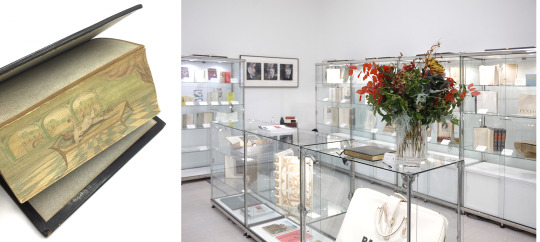
View On WordPress
0 notes